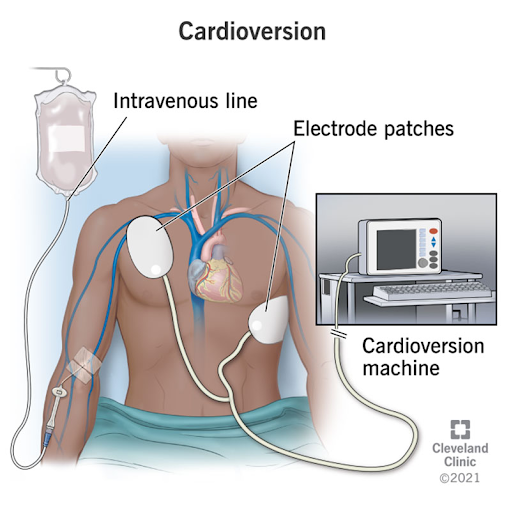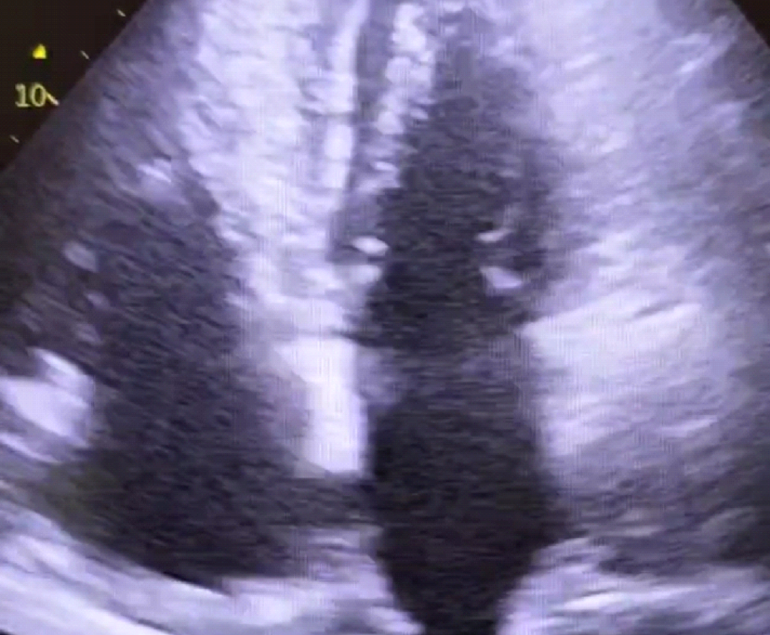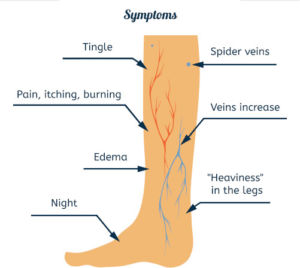Cardioversion is a medical procedure used to restore a normal heart rhythm in patients with certain types of abnormal heart rhythms or arrhythmias, particularly atrial fibrillation or atrial flutter. It involves delivering a controlled electric shock to the heart to reset its electrical activity and restore a normal sinus rhythm.
Procedure
During a cardioversion procedure, the patient is typically sedated or under general anesthesia to minimize discomfort and reduce the risk of injury. The procedure is performed in a hospital setting, often in a specialized cardiac electrophysiology laboratory (EP lab) or cardiac catheterization laboratory (cath lab). The following steps outline the general process of cardioversion:- Preparation: The patient’s vital signs, including heart rate, blood pressure, and oxygen saturation, are monitored continuously throughout the procedure. Electrodes or patches are placed on the patient’s chest to deliver the electric shock.
- Anesthesia: Depending on the patient’s condition and preferences, they may receive sedation or general anesthesia to ensure comfort and relaxation during the procedure. An anesthesiologist or nurse anesthetist administers the anesthesia and monitors the patient’s sedation level and vital signs throughout the procedure.
- Electrode Placement: Electrodes or patches are placed on the patient’s chest to deliver the electric shock to the heart. The electrodes are positioned in specific locations to ensure effective transmission of the electrical energy to the heart muscle.
- Shock Delivery: Once the electrodes are in place, the healthcare provider delivers a synchronized electrical shock to the heart using a defibrillator or cardioverter device. The shock is timed to coincide with a specific phase of the cardiac cycle, typically during the QRS complex, to maximize the chances of restoring a normal sinus rhythm.
- Assessment: After the shock is delivered, the patient’s heart rhythm is monitored closely to assess the response to cardioversion. In some cases, multiple shocks may be required to restore a normal rhythm. Continuous monitoring of vital signs and cardiac rhythm is maintained until the patient has fully recovered from sedation or anesthesia.
- Post-Procedure Care: After cardioversion, the patient may require observation in a recovery area or hospital ward until they are fully awake and stable. Vital signs, including heart rhythm, blood pressure, and oxygen saturation, are monitored regularly to detect any complications or recurrence of arrhythmias.
Uses of Cardioversion
Cardioversion is used for various diagnostic and therapeutic purposes, including:- Restoring Normal Rhythm: Cardioversion is used to restore a normal sinus rhythm in patients with atrial fibrillation, atrial flutter, or other arrhythmias that can be electrically cardioverted.
- Managing Symptoms: Cardioversion helps relieve symptoms associated with abnormal heart rhythms, including palpitations, shortness of breath, chest pain, fatigue, and dizziness.
- Preventing Complications: Cardioversion is used to prevent complications of atrial fibrillation or other arrhythmias, including stroke, heart failure, and thromboembolism, by restoring and maintaining a normal heart rhythm.
- Assessing Treatment Response: Cardioversion helps assess the effectiveness of antiarrhythmic medications or other treatments for atrial fibrillation or other arrhythmias by temporarily restoring a normal rhythm.
Risks and Considerations
Cardioversion is generally safe, but it carries some risks and considerations, including:- Skin Burns: Cardioversion can cause skin burns or irritation at the site of electrode placement due to the electric shock delivered to the chest.
- Arrhythmia Recurrence: Cardioversion may not be successful in restoring a normal rhythm in all cases, and arrhythmias may recur after the procedure.
- Thromboembolism: Cardioversion carries a risk of dislodging blood clots from the heart and causing thromboembolic complications, particularly in patients with atrial fibrillation or atrial flutter. To reduce this risk, patients typically receive anticoagulant medications before and after cardioversion.
- Anesthesia Risks: Sedation or anesthesia used during cardioversion carries risks, including respiratory depression, airway obstruction, and adverse reactions to anesthetic agents.




